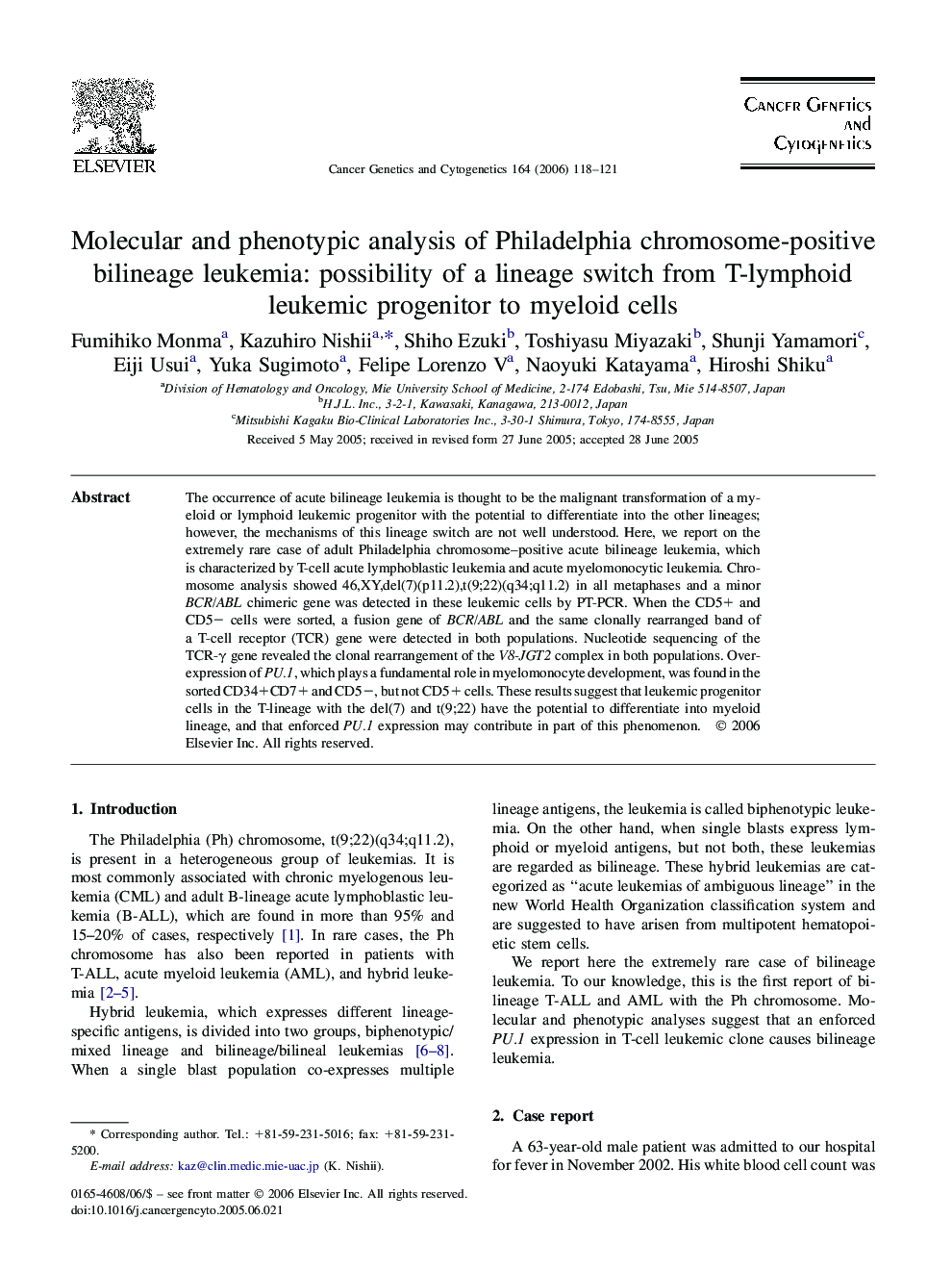| Article ID | Journal | Published Year | Pages | File Type |
|---|---|---|---|---|
| 2112023 | Cancer Genetics and Cytogenetics | 2006 | 4 Pages |
Abstract
The occurrence of acute bilineage leukemia is thought to be the malignant transformation of a myeloid or lymphoid leukemic progenitor with the potential to differentiate into the other lineages; however, the mechanisms of this lineage switch are not well understood. Here, we report on the extremely rare case of adult Philadelphia chromosome-positive acute bilineage leukemia, which is characterized by T-cell acute lymphoblastic leukemia and acute myelomonocytic leukemia. Chromosome analysis showed 46,XY,del(7)(p11.2),t(9;22)(q34;q11.2) in all metaphases and a minor BCR/ABL chimeric gene was detected in these leukemic cells by PT-PCR. When the CD5+ and CD5â cells were sorted, a fusion gene of BCR/ABL and the same clonally rearranged band of a T-cell receptor (TCR) gene were detected in both populations. Nucleotide sequencing of the TCR-γ gene revealed the clonal rearrangement of the V8-JGT2 complex in both populations. Overexpression of PU.1, which plays a fundamental role in myelomonocyte development, was found in the sorted CD34+CD7+ and CD5â, but not CD5+ cells. These results suggest that leukemic progenitor cells in the T-lineage with the del(7) and t(9;22) have the potential to differentiate into myeloid lineage, and that enforced PU.1 expression may contribute in part of this phenomenon.
Related Topics
Life Sciences
Biochemistry, Genetics and Molecular Biology
Cancer Research
Authors
Fumihiko Monma, Kazuhiro Nishii, Shiho Ezuki, Toshiyasu Miyazaki, Shunji Yamamori, Eiji Usui, Yuka Sugimoto, Felipe Lorenzo V, Naoyuki Katayama, Hiroshi Shiku,
